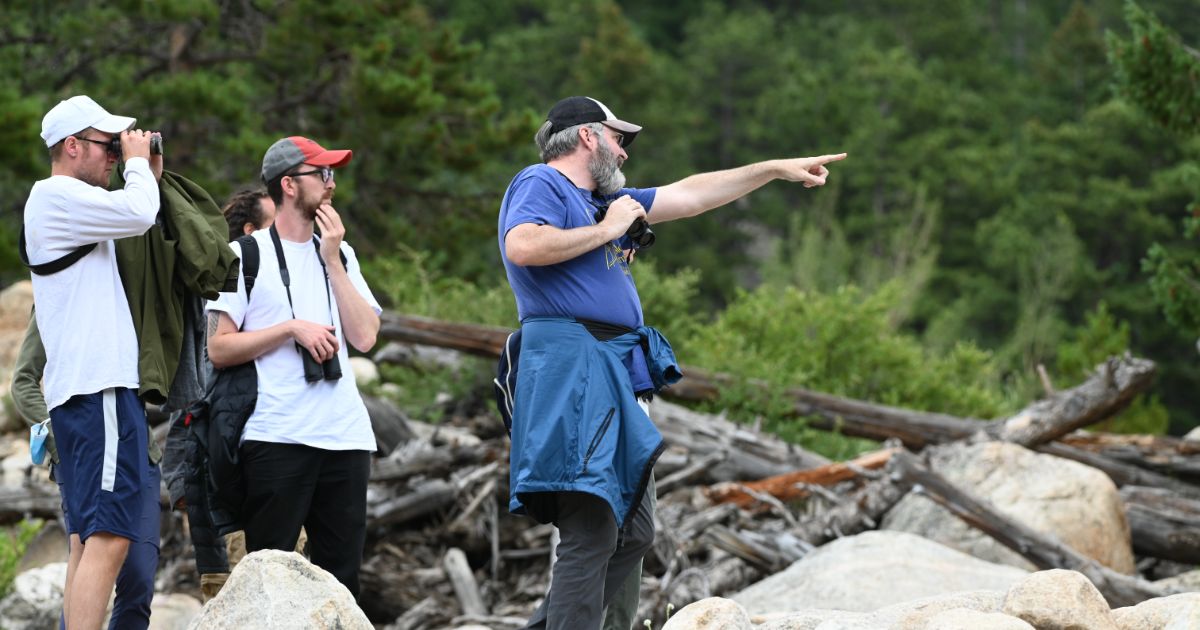
Category: Entomology and Wildlife Ecology

UD’s Jeff Buler and alumnus Matt Hardy team up on startup company to combat bird flu
February 10, 2025 Written by Katie Peikes | Photo submitted by Matt Hardy
A highly contagious disease has wiped out millions of chickens and turkeys across the U.S. over the last three years, stressing the poultry industry, causing egg prices to soar, and even seeping into mammals such as dairy cattle, dolphins and humans.
“It’s kind of like whack-a-mole,” said Jeff Buler, University of Delaware wildlife ecology professor. “When it pops up, we cull that flock, hoping that will prevent the spread. But it doesn’t. And the fact that the virus is also in wild birds, like waterfowl, which we can’t really control means there is a reservoir for the virus outside of the poultry industry.”
Enter startup AgriNerds. The startup created the Waterfowl Alert Network which uses weather radar to create daily maps of where migratory waterfowl are and where they’re predicted to be.
The web-based platform tracks waterfowl and notifies farmers and poultry companies when waterfowl are near their farm, so they can beef up their biosecurity practices to protect their flocks from highly pathogenic avian influenza, commonly known as bird flu. Buler is a chief scientist for the startup.
AgriNerds launched the Waterfowl Alert Network in 2022. The technology uses licensed software IP Buler developed with collaborators at the University of California, Davis.
Waterfowl are a major reservoir for bird flu. They can carry avian influenza viruses in their intestinal tract and spread them through their saliva or excrement. In many cases wild birds show no symptoms of the virus themselves.
The Waterfowl Alert Network runs during November through March, the time of year waterfowl are most abundant in the U.S. during their fall and spring migrations.
“This is really about food security,” Buler said. “We’re trying to prevent avian influenza from infecting commercial poultry. We have killed over 150 million infected chickens and turkeys over the past three years, which has limited egg supplies and led to high egg prices.”
AgriNerds was selected to present this technology in the Ag Tech and Food Category for the 17th annual SXSW Pitch in Austin, Texas. SXSW Pitch, presented by KPMG, is the marquee event of South by Southwest® (SXSW®) Conference & Festivals (March 7 - 15, 2025), where leading startups from around the world showcase some of the most impressive technology innovations to a panel of hand-picked judges and a live audience.
Agrinerds was one of 70+ finalists and alternates selected of the 589 companies that applied to present. The pitch event will take place March 8 and 9.
“It’s a great opportunity to help us spread the word about the Waterfowl Alert Network tool,” Buler said. “We want the poultry industry to know it is out there and it is useful.”
U.S. farms sign up and subscribe to the platform to receive alerts. Using their location data, the Waterfowl Alert Network quantifies each farm’s likelihood of exposure to waterfowl, and sends the farms daily alerts over email during November through March.
Matt Hardy, a waterfowl ecologist at AgriNerds and an alumnus of UD’s Wildlife Ecology M.S. program, said the company currently has about 1,500 farms in 25 states subscribed to its platform.
Hardy will represent AgriNerds at the event and pitch the Waterfowl Alert Network to the audience. Through the SXSW Pitch event, the hope, he said, is to expand the user base, and even pick up some investors.
“We rely very heavily on government grants,” Hardy said. “So we actually want to develop a business to business model or a business to government model, where we can provide our data to the U.S. Department of Agriculture, for example, so that they can make informed decisions.”
Hardy and Buler recently published new research in the Journal of Avian Biology examining weather radar in Delaware, North Carolina and California to compare and contrast what is driving waterfowl populations in regions that have high amounts of poultry production. The findings create a better understanding of waterfowl on the landscape.
“In the Central Valley of California, waterfowl distributions are closely tied to flooding of the landscape and the availability of rice,” Hardy said. “In the Mid-Atlantic, there were more waterfowl closer to the coast and when there was more emergent wetland on the landscape.”
To get these results, they examined six of the 160 weather radars in the U.S. Hardy said his U.S. Department of Agriculture-funded research provided data to AgriNerds to help it develop the Waterfowl Alert Network.
Hardy would like to look at the other 154 weather radars and capture waterfowl distributions from a nationwide perspective. He hopes that can be possible if investors show interest.
“The more I learn about this conference, it’s very prestigious,” Hardy said. “There’s a lot of influential visionaries, a lot of people who have interest and availability to scale up what we’re already doing.”
He continued, “It’s a great opportunity to meet a bunch of people in different sectors, brainstorm and share ideas.”
